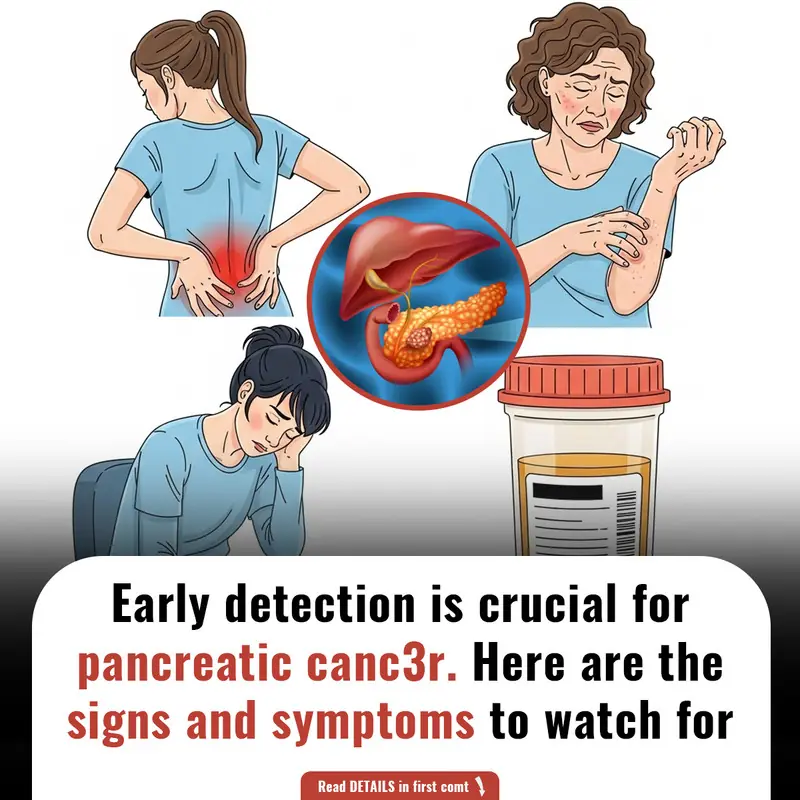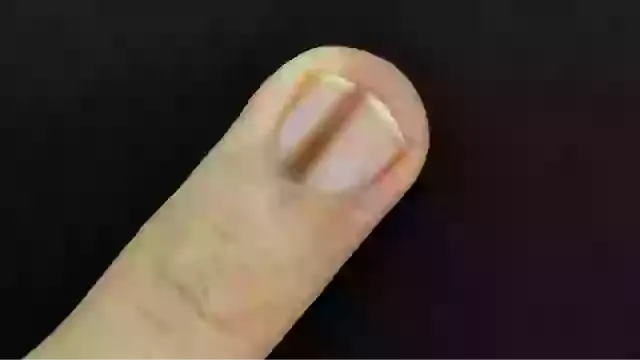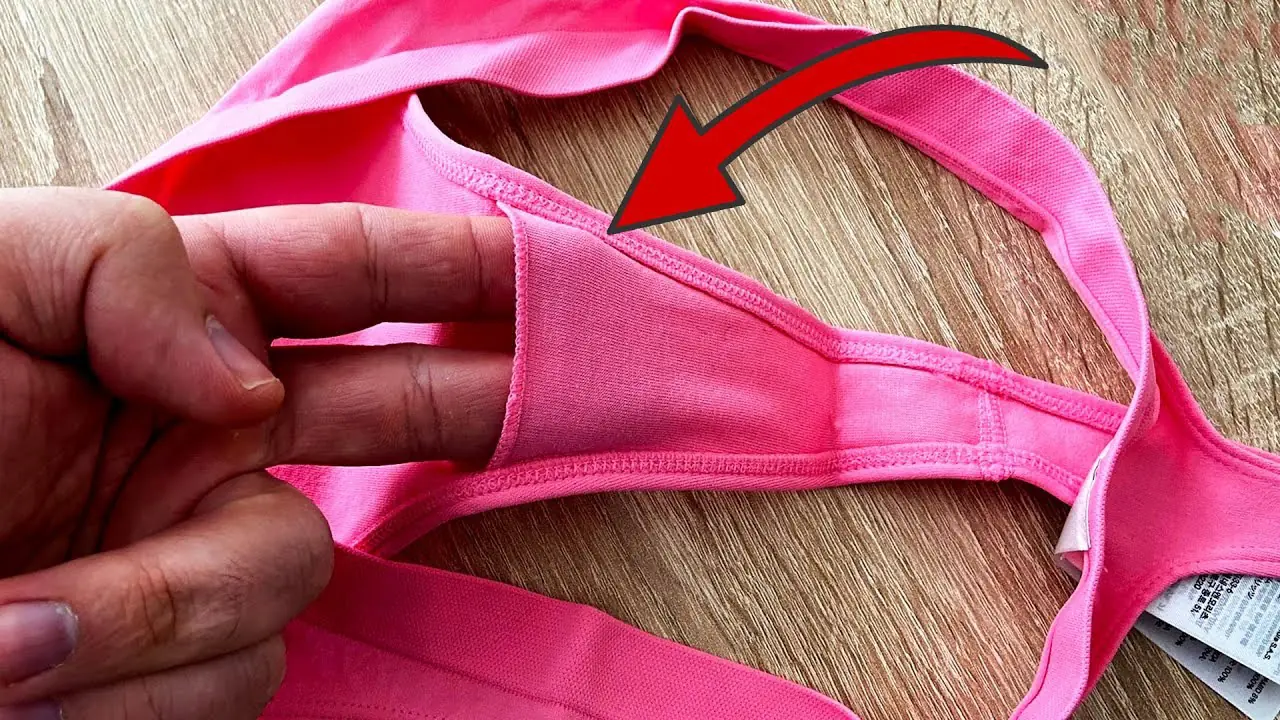
Unusual Skin C@ncer Symptoms: How to Spot Warning Signs on Your Lips and Fingernails
Skin c@ncer is one of the most common types of c@ncer, often triggered by prolonged sun exposure. While many people are familiar with the classic signs, like a new mole or dark spot on the skin, there are lesser-known symptoms that may appear elsewhere on the body. Two such areas include the lips and fingernails. Dry, chapped lips and a dark streak under a fingernail could be early indicators of skin c@ncer, particularly actinic cheilitis and subungual melanoma.
In this article, we’ll explore these unusual symptoms and why it’s essential to keep an eye on changes to your lips and nails. Early detection and treatment are key to managing skin c@ncer and preventing its progression.
Dry, Chapped Lips: A Sign of Actinic Cheilitis
While most people associate dry, chapped lips with cold weather or dehydration, it could also be a warning sign of a condition called actinic cheilitis. This prec@ncerous condition typically affects the lower lip and is caused by long-term exposure to ultraviolet (UV) light, like the sun. It can start as rough patches, scales, or redness, and if left untreated, it may progress to squamous cell carcinoma (SCC), a type of skin c@ncer.
What is Actinic Cheilitis?
Actinic cheilitis, also known as solar cheilitis, is a degenerative condition that affects the tissue of the lips. The American Academy of Oral Medicine explains that it is more common in adults, especially those over the age of 50. Men are more likely to develop this condition than women, particularly individuals with fair skin or those who spend long hours outdoors without sun protection.
If you notice persistent dryness, cracks, or rough patches on your lower lip that don't improve, it’s important to consult a dermatologist. Solar cheilitis can potentially progress into squamous cell carcinoma, so early diagnosis and treatment are critical.
Prevention and Protection
To reduce the risk of actinic cheilitis and other sun-related skin conditions, the Skin c@ncer Foundation advises using sunscreen with an SPF of at least 30, even on your lips. Lip balms with built-in UV protection are also recommended, especially for those who spend time outdoors.
Dark Streak Under Fingernails: A Sign of Subungual Melanoma
A dark line under your fingernail may seem like a harmless bruise, but in some cases, it could indicate a rare form of melanoma known as subungual melanoma. This type of skin c@ncer affects the nail matrix, the tissue at the base of the nail where new cells are formed. Subungual melanoma begins as a brown or black streak under the nail, which often expands over time. It can cause the nail to separate from the nail bed and may result in darkening of the surrounding skin.
What is Subungual Melanoma?
Subungual melanoma is a rare form of melanoma, accounting for about 3.5% of all melanoma cases. Unlike typical melanoma, which forms on the skin's surface, subungual melanoma originates in the nail matrix. It often presents as a dark line or streak under the nail, sometimes mistaken for a bruise or trauma. Over time, the streak may become wider, and the skin around the nail may darken, signaling the spread of c@ncer cells.
Subungual melanoma is more common in individuals with darker skin tones, but it can affect anyone. If you notice a new, dark line under your nail that doesn’t seem to be related to an injury, it’s important to see a dermatologist for an evaluation.
What to Look For:
-
Brown or black streak under the nail
-
Nail separation from the nail bed
-
Darkening of the surrounding skin
If the line doesn’t result from trauma, seek medical attention immediately. Early diagnosis can improve outcomes and prevent the c@ncer from spreading.
How to Reduce the Risk of Skin c@ncer
The best way to prevent skin c@ncer is to protect your skin from excessive UV exposure. The Skin c@ncer Foundation offers the following tips for reducing your risk:
-
Wear Sunscreen: Use broad-spectrum sunscreen with SPF 30 or higher daily, even on cloudy days. Reapply every two hours when outdoors.
-
Wear Protective Clothing: Long sleeves, hats, and sunglasses can help shield your skin from UV rays.
-
Avoid the Sun Between 10 a.m. and 4 p.m.: The sun's rays are strongest during these hours, so limit sun exposure during this time.
-
Perform Regular Skin Checks: Examine your skin regularly for new moles, dark spots, or any unusual changes. Pay attention to your lips, nails, and other often-overlooked areas.
When Should You See a Doctor?
If you notice any of the signs mentioned above, such as persistent dryness on your lips or a dark streak under your nail, it’s important to see a healthcare provider. If you’re concerned about a potential skin c@ncer diagnosis, a dermatologist can perform a thorough examination, recommend the necessary tests, and discuss possible treatment options.
For those who spend time outdoors or have a history of sun exposure, it’s crucial to stay vigilant and get regular skin checks. Early detection of skin c@ncer significantly improves the chances of successful treatment.
Conclusion
Skin c@ncer symptoms can often be subtle and easy to overlook, but recognizing early warning signs is essential for effective treatment. Whether it’s dry, chapped lips caused by actinic cheilitis or a dark streak under the nail from subungual melanoma, these signs can be indicators of more serious conditions. With proper protection and regular check-ups, you can reduce your risk and ensure the health of your skin.
Credit
This article is based on information sourced from express.co.uk and additional insights from the Skin c@ncer Foundation, American Academy of Oral Medicine, and health.ucdavis.edu. For more details on skin c@ncer prevention and early detection, consult a dermatologist or trusted health resources.
News in the same category


36-Year-Old Teacher Passed Away From Diabetes Doctors Say Was Triggered By Everyday Foods
Diabetes is a dangerous condition with numerous complications, and diet is a key factor.

Experts issue urgent warning about terrifying hidden symptom from taking Mounjaro and Ozempic
Experts have issued an urgent warning about a symptom that can come to light from taking drugs such as Mounjaro and Ozempic.

The Benefits of Epsom Salt Foot Soak: A Natural Remedy for Foot Pain and Health
Discover the health benefits of Epsom salt foot soaks, including pain relief, exfoliation, fungal infection treatment, and more. Learn how to safely use Epsom salt for foot health.

What Causes Blue Veins? Understanding the Reasons and When to Seek Help
Blue or green veins are common, but when should you worry? Learn the possible causes of visible veins, from genetics to lifestyle factors, and when it may indicate a medical condition.

7 Early Warning Signs of Diabetes You Shouldn’t Ignore: Act Now for Better Health
Learn about 7 early warning signs of diabetes that could be easily overlooked. Early detection can help manage diabetes, prevent complications, and improve quality of life. Read on for expert insights.

Genetic Link Between Endometriosis and Autoimmune Diseases Revealed in New Study
A new study has identified a shared genetic link between endometriosis and autoimmune conditions. Women with endometriosis are at a higher risk for diseases like rheumatoid arthritis, multiple sclerosis, and psoriasis.

People Warned to See a Doctor After Sharing Photo of Concerning Dark Line on Finger
A Reddit user received warnings to see a doctor immediately after posting an image of a dark line on their finger. Learn about melanonychia and why nail discoloration can be a serious health concern.

Breakthrough in Parkinson’s Treatment: Japanese Scientists Successfully Implant Lab-Grown Brain Cells
Japanese researchers have made a groundbreaking discovery in Parkinson’s treatment using lab-grown brain cells. Early results from the clinical trial show promising improvements in movement and dopamine production.

4 Simple Steps to Cool Your Home Faster and Save on Electricity Before Turning on the Air Conditioner

3-Blade vs. 5-Blade Fans: Which Cools Better? The Truth Behind Common Misconceptions

The Alarming Rise of Bowel C@ncer in Young Adults: Is Your Diet to Blame

United Airlines Passenger Punches Gate Agent, Kn0cking Them Out

Should You Close or Leave the Toilet Lid Open After Use? 90% of People Get It Wrong — Here's Why Your Bathroom Always Smells

4 Everyday Foods That Fuel C@ncer Cells

Fatty Liver Disease: A Silent Pathway to Liver C@ncer

The Hidden Purpose of the Pocket in Women's Underwear: More Than Just a Design Feature
In actuality, the "pocket" in women's underwear is actually a gusset, which serves a number very valid purposes.

This quick 'cup of tea' test could be a simple way to spot early signs of dementia in a loved one

A doctor has revealed a simple thumb test that can uncover a "ticking time b0mb" heart condition

Avocados are incredibly healthy, if using them incorrectly in these 3 common ways could actually have adverse effects
News Post

The Woman Who Walked Away: A Journey of Self-Discovery and Empowerment
A powerful tale of self-realization as Alina breaks free from a toxic relationship, finding strength and confidence after a painful breakup. Discover how she chooses her own path towards happiness and independence.

Silent Signals: Recognizing the Subtle Symptoms of Pancreatic C@ncer

The Earring in the Passenger Seat: A Suspicious Find Leads to a Truthful Confrontation
A woman finds a sh0cking truth after discovering a mysterious child’s drawing in her fiancé’s car. Suspicion, betrayal, and secrets unravel as she confronts him, ultimately deciding the fate of their relationship.

Am I Wrong for Not Laughing at My Fiancé's "Jokes" About Calling Off Our Wedding?
A bride-to-be is questioning her relationship after her fiancé repeatedly jokes about calling off their wedding. What happens when humor crosses the line into hurtful behavior?

36-Year-Old Teacher Passed Away From Diabetes Doctors Say Was Triggered By Everyday Foods
Diabetes is a dangerous condition with numerous complications, and diet is a key factor.

Experts issue urgent warning about terrifying hidden symptom from taking Mounjaro and Ozempic
Experts have issued an urgent warning about a symptom that can come to light from taking drugs such as Mounjaro and Ozempic.

The Benefits of Epsom Salt Foot Soak: A Natural Remedy for Foot Pain and Health
Discover the health benefits of Epsom salt foot soaks, including pain relief, exfoliation, fungal infection treatment, and more. Learn how to safely use Epsom salt for foot health.

What Causes Blue Veins? Understanding the Reasons and When to Seek Help
Blue or green veins are common, but when should you worry? Learn the possible causes of visible veins, from genetics to lifestyle factors, and when it may indicate a medical condition.

DIY Rice Cream for Radiant, Youthful Skin: The Japanese Secret to Erasing Wrinkles & Fine Line
With its powerful combination of rice, almond oil, and vitamin-rich ingredients, this rice cream provides nourishment, hydration, and antioxidant protection to your skin.

7 Early Warning Signs of Diabetes You Shouldn’t Ignore: Act Now for Better Health
Learn about 7 early warning signs of diabetes that could be easily overlooked. Early detection can help manage diabetes, prevent complications, and improve quality of life. Read on for expert insights.

5 Homemade Skin Toners for Smooth, Glowing Skin: Natural Remedies for Every Skin Type
By incorporating these toners into your daily routine, you can expect healthier, brighter, and more balanced skin without the use of harsh chemicals.

Genetic Link Between Endometriosis and Autoimmune Diseases Revealed in New Study
A new study has identified a shared genetic link between endometriosis and autoimmune conditions. Women with endometriosis are at a higher risk for diseases like rheumatoid arthritis, multiple sclerosis, and psoriasis.

Roasted Onion Peel and Garlic Peel Remedies for Grey Hair: Natural Solutions for Dark, Vibrant Hair
. Roasted onion peel and garlic peel offer effective, safe, and natural alternatives that can help you combat grey hair and restore youthful vitality.

People Warned to See a Doctor After Sharing Photo of Concerning Dark Line on Finger
A Reddit user received warnings to see a doctor immediately after posting an image of a dark line on their finger. Learn about melanonychia and why nail discoloration can be a serious health concern.

Breakthrough in Parkinson’s Treatment: Japanese Scientists Successfully Implant Lab-Grown Brain Cells
Japanese researchers have made a groundbreaking discovery in Parkinson’s treatment using lab-grown brain cells. Early results from the clinical trial show promising improvements in movement and dopamine production.

4 Simple Steps to Cool Your Home Faster and Save on Electricity Before Turning on the Air Conditioner

Effective Cumin Seed Detox Tonic for Belly Fat Reduction: Your Ultimate Guide to a Flatter Midsection
The cumin seed detox tonic is a natural, easy-to-make remedy that can help accelerate belly fat loss, improve digestion, and enhance overall health.

3-Blade vs. 5-Blade Fans: Which Cools Better? The Truth Behind Common Misconceptions

The Alarming Rise of Bowel C@ncer in Young Adults: Is Your Diet to Blame
